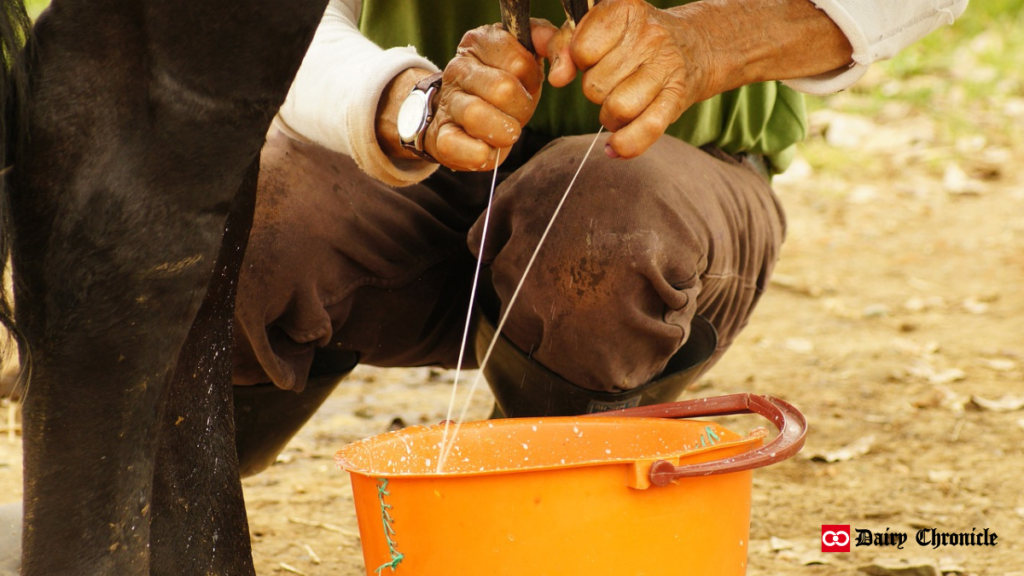Maharashtra’s government has introduced a new milk subsidy of Rs 5 per liter to support dairy farmers grappling with low milk prices. This ongoing subsidy aims to boost farmers’ income by increasing the procurement price to Rs 30-31 per liter, though farmers are requesting Rs 40. The subsidy follows political pressures and protests over low milk prices. The financial viability of dairies is challenged by current market conditions and cost structures. The success of this subsidy will depend on effective implementation and addressing ongoing farmer demands, with significant implications for the state’s dairy industry and political landscape.
Maharashtra’s government recently announced a new milk subsidy aimed at supporting dairy farmers. This subsidy seeks to address the ongoing issues of low milk prices and the financial struggles faced by milk producers in the state.
Understanding the Subsidy Scheme
The Maharashtra government has introduced a new subsidy of Rs 5 per liter specifically for milk-producing farmers. This initiative is designed to provide financial relief by boosting the income of dairy farmers. The subsidy is a continuation of earlier efforts aimed at supporting farmers during times of financial strain.
Key Aspects of the Subsidy:
- Subsidy Amount: The government has set the subsidy at Rs 5 per liter of milk produced. This additional financial support is intended to increase the overall earnings of dairy farmers.
- Purpose and Goals: The primary aim of this subsidy is to enhance the procurement price that dairy farmers receive for their milk. By increasing this price, the government hopes to improve farmers’ financial stability and address issues related to low milk prices.
- Duration and Implementation: Unlike previous subsidies with defined end dates, this new subsidy does not specify a termination point. It is designed to be an ongoing measure to provide continuous support. However, dairies are awaiting further details regarding how and when the subsidy will be implemented in practice. This includes understanding the logistics of how the funds will be disbursed and any additional requirements or conditions attached to the subsidy.
Overall, this subsidy is a strategic move to offer sustained financial support to the dairy sector, aiming to stabilize and improve the economic conditions for milk producers across Maharashtra.
Background and Reasons for the Subsidy
The announcement comes after significant political losses in areas where dairy farming is a major livelihood. Low milk procurement prices have been a major issue for farmers, leading to protests and demands for higher prices. The government aims to address these concerns by providing the subsidy, which will help increase the price farmers receive for their milk.
Economic Viability and Dairy Industry Perspective
In Maharashtra, dairies currently pay farmers between Rs 24 and 26 per liter for milk. The new subsidy aims to increase this price to Rs 30-31 per liter, though farmers are requesting Rs 40 per liter. Here’s a detailed breakdown of the costs and financial constraints faced by dairies:
Payment and Cost Analysis:
| Aspect | Current Rates | With Subsidy | Farmer Demand |
| Payment to Farmers (per liter) | Rs 24 to 26 | Rs 30 to 31 | Rs 40 |
| Milk Yield from 100 liters – Fat Content – Solid Not Fat (SNF) | 3.598 kg 8.738 kg | 3.598 kg 8.738 kg | 3.598 kg 8.738 kg |
| Market Prices – Skimmed Milk Powder (SMP) – Yellow Butter | Rs 210 per kg Rs 350 per kg | Rs 210 per kg Rs 350 per kg | Rs 210 per kg Rs 350 per kg |
| Gross Realization (100 litters) – From SMP (3.598 kg) – From Fat (8.738 kg) | Rs 3,371 Rs 755.58 Rs 3,059.92 | Rs 3,371 Rs 755.58 Rs 3,059.92 | Rs 3,371 Rs 755.58 Rs 3,059.92 |
| Processing and Transportation Cost (per liter) | Rs 7 | Rs 7 | Rs 7 |
| Maximum Payment to Farmers (per liter) | Rs 26.71 | Rs 30-31 | Rs 40 |
with the financial constraints faced by dairies
Notes:
- Gross Realization Calculation:
- SMP from 100 liters of milk: 8.738 kg × Rs 210/kg = Rs 1,835.98
- Fat from 100 liters of milk: 3.598 kg × Rs 350/kg = Rs 1,259.30
- Total gross realization: Rs 1,835.98 (SMP) + Rs 1,259.30 (Fat) = Rs 3,095.28
- Processing and Transportation Cost: Rs 7 per liter, leading to a maximum feasible payment of Rs 26.71 per liter.
Implications and Future Prospects
The introduction of the milk subsidy is a promising move to enhance the financial well-being of dairy farmers. However, its success will hinge on several factors:
Key Implications:
- Improved Farmer Income: The subsidy is expected to provide some relief by increasing the price farmers receive for their milk, potentially improving their financial stability.
- Implementation Challenges: The effectiveness of the subsidy will largely depend on how well it is implemented. Timely disbursement and clear guidelines are crucial to ensure that the support reaches the intended beneficiaries.
Future Prospects:
- Balancing the Expectations: While the subsidy is a step in the right direction, the government will need to address these demands and manage expectations to maintain stability in the dairy sector.
- Political Impact: The subsidy has significant political implications, particularly in regions where dairy farming is a major economic activity. It reflects the government’s effort to address agricultural issues and improve its standing in dairy-dependent areas.
Maharashtra’s new milk subsidy is a crucial initiative aimed at supporting dairy farmers and addressing the issue of low milk prices. While the subsidy provides immediate financial relief, its long-term success will depend on effective implementation and continued government support for the dairy sector. The evolving political and economic landscape will play a significant role in shaping the future of Maharashtra’s dairy industry.



